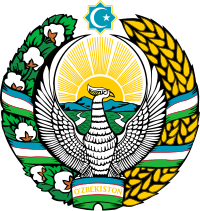Huma bird
The Huma (Persian: هما, pronounced Homā, Avestan: Homāio), also Homa or Homay,[1] is a mythical bird of Iranian[2][3] legends and fables, and continuing as a common motif in Sufi and Diwan poetry.
The Huma bird is said to never come to rest, living its entire life flying invisibly high above the earth, and never alighting on the ground (in some legends it is said to have no legs).
In Iranian literature, this kingship-bestowing function of the Huma bird is identified with pre-Islamic monarchs, and stands vis-à-vis ravens, which is a metaphor for Arabs.
[9] Sufi teacher Inayat Khan gives the bestowed-kingship legend a spiritual dimension: "Its true meaning is that when a person's thoughts so evolve that they break all limitation, then he becomes as a king.
[14] In general, Iranian and Zoroastrian traditions consider vultures as beneficial creatures due to their ability to efficiently and cleanly scavenge corpses and carrion, thereby preventing contamination of the soil and water.





